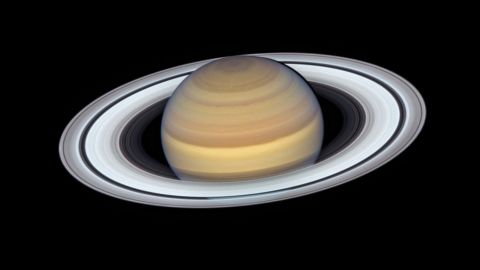by Jill Warnke
In December 17 2018, NASA released an article revealing that Saturn is predicted to lose its most prominent feature, its ring system.
Saturn is the 5th closest planet to the sun and second largest (first being Jupiter) in our solar system. It’s been recorded to have 7 rings stretching thousands of miles and varying in matter and vibrancy. But what exactly are Saturn’s rings?
Saturn’s rings are composed of the broken pieces from celestial objects such as comets, moons, and asteroids. The size of the rings’ materials can range from miniscule ice grains to chunks the size of several-story buildings.
However, these rings have been estimated to disappear in 100 million years due to a phenomenon called “ring rain.”
The discovery of ring rain began with some peculiar findings found in observations on Saturn from Voyager 1 and Voyager 2 (two robotic interstellar probes launched by NASA in 1977). There were strange variations in Saturn’s ionosphere and ring densities as well as the appearance of 3 dark bands in the planet’s stratosphere, visible in images from Voyager 2 in 1981.
A paper written by Jack Connerney of NASA Goddard proposed that electrically charged ice particles in Saturn’s rings have been flowing down invisible magnetic lines and dumping water into Saturn’s upper atmosphere where the lines emerge from. This additional water seemingly washed away Saturn’s atmospheric haze and created the dark bands in it’s stratosphere.
Because of this magnetic pull, the materials making up Saturn’s rings will be dragged down to Saturn’s atmosphere until there is nothing left in the rings. Since the pull is based on Saturn’s magnetic field, Saturn would lose its inner rings first and they would gradually disappear from the inner rings to the outer depending on its closeness to Saturn.
It is undetermined whether Saturn was formed with or without their rings. If these temporary rings were gained, some scientists speculate that Jupiter, Uranus, and Neptune also had rings at some point since they have very thin ringlets as of late.
Saturn’s rings are expected to disappear within 100 million years and its entire ring system within 300 million. While it seems like a very long time for us, the span of existence for the rings has been relatively short compared to that of Saturn’s.
Nonetheless, the fate of Saturn’s ring system won’t be witnessed until the very far future.






Be First to Comment